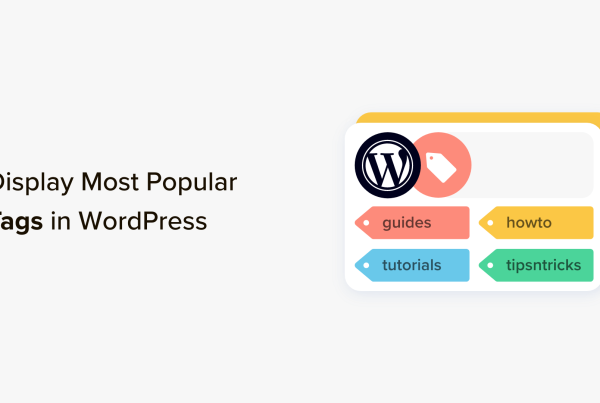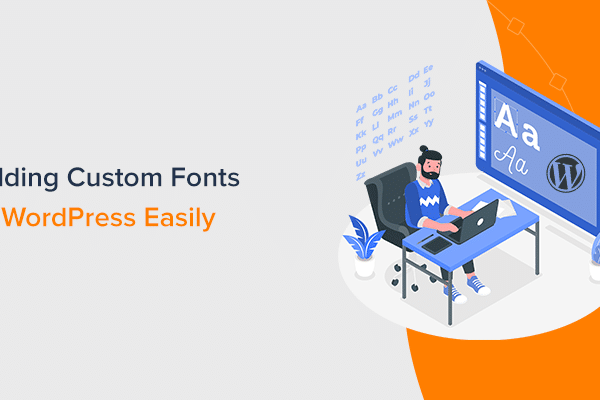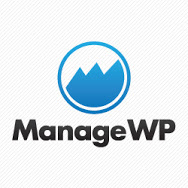If you’re a business looking to compete on a global scale but don’t have a multilingual website – chances are you’re not nearly fulfilling your maximum commercial potential. In truth, as we move increasingly more profoundly into the digital era where online selling is becoming more and more commonplace, addressing this language gap in your business seems like more of a necessity than choice.
According to Nielsen, 57% of consumers are estimated to have bought products outside their home country in 2019. With the global cross-border e-commerce market expected to exceed 1 trillion USD in 2020, this percentage looks set to rise even further. Add to this the current global economic downfall, which seems sure to see competition on a global level intensify. As a result, drawing in new customers becomes more important than ever. Fortunately, taking the initiative to translate your website can not only help you mitigate these risks but also seize a wealth of previously untapped opportunities.
Reach new customers
Broaden your customer base
With 4.5 billion internet users in the world today, the potential for any business selling on the online marketplace is truly colossal. However, if you’re only providing this offering in English, you’re already limiting this potential by a factor of 4 if we consider that only 25% of these internet users are native English speakers.
The deduction from this statistic is quite simple, 3 out of 4 internet users want to browse e-commerce sites and make purchases in a language other than English.
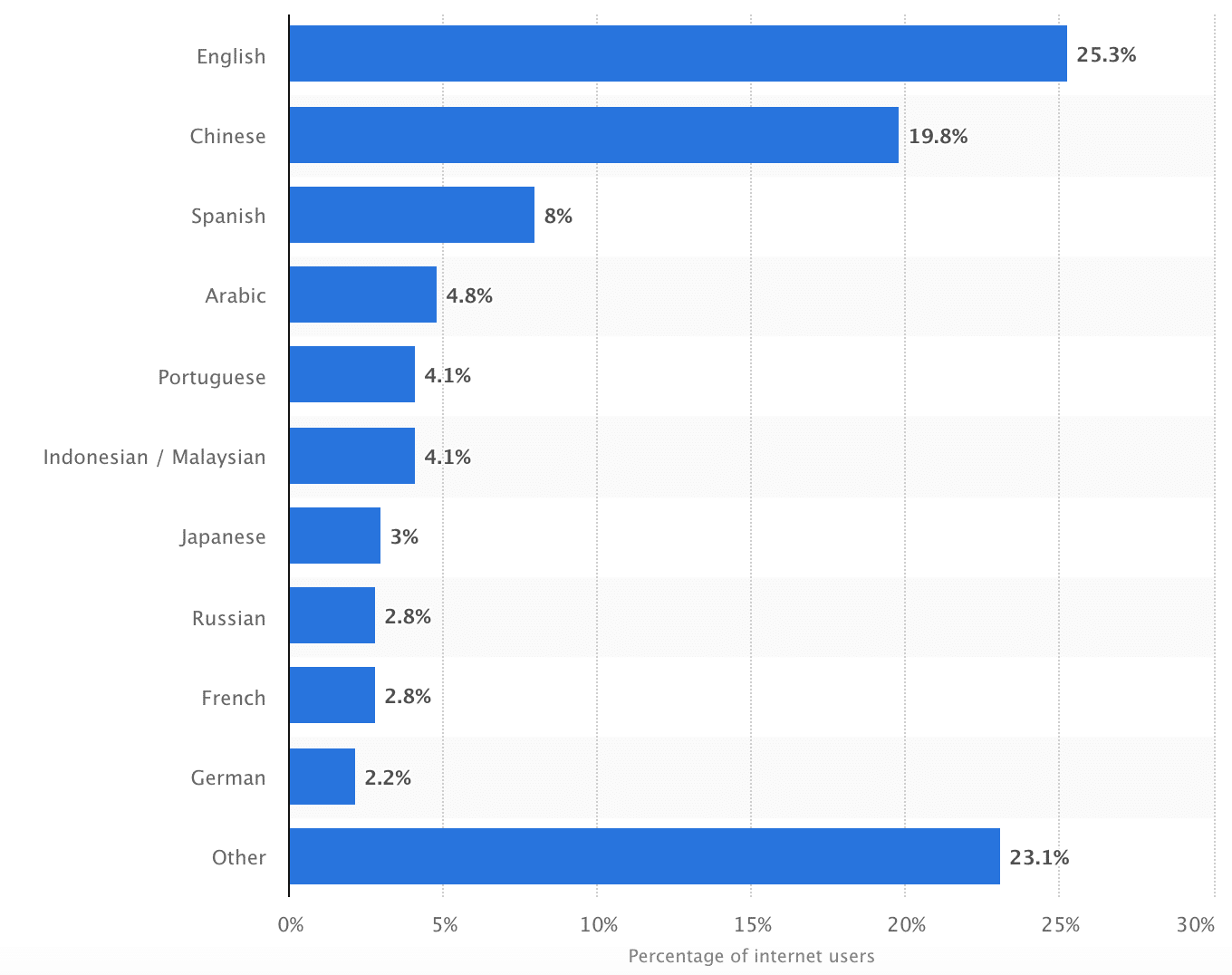
Source: Statista
Taking the plunge and going multilingual is a logical step for any company looking to expand on an international scale. The graphic above shows the breakdown of the most popular languages used by internet users. Even translating just one language can make a huge difference. For example, translating your English site into Chinese can boost your global potential from 25.3% of internet users to 45.1% instantly.
As a result, making your site available in other languages opens up whole new customer segments in both domestic and international markets. Increased web traffic will result in a long term broadening of your customer base which in turn will translate into further commercial success. The investment in a multilingual site is likely to be worth your while too, with the Localization Industry Standards Association (LISA) estimating that on average every €1 spent on localizing your website yields €25 in return.
International SEO
SEO or search engine optimization is another crucial consideration when it comes to reaching new customers. Essentially, what it refers to is how highly your website ranks on the search engine results pages (SERPs) of Google and other popular search engines. So, the higher you rank, the more traffic you’re likely to get on your website. But it’s not just the traffic where you’re gaining, these additional visitors will result in more click on product pages and increased sales and profits, which means getting this aspect of business right is imperative.
If we consider the fact that less than 1% of Google users click into websites beyond the first page of search results, the importance of ranking highly for specific keywords becomes even greater. Chances are you’re already aware of this and have been working hard to rank as highly as possible on national level in one language. However, have you considered the importance of ranking highly on international SERPs pages when the internet users are searching in different languages?
When you’re working on your own international SEO strategy there are a few things you’ll want to keep in mind. Firstly, you’ll want to have your website structured in a way that enables search engine bots to easily scan through your content which will help you achieve higher rankings. One of the most important things you can do for this, is have ALL of your sites content translated, this includes information that’s not visible on your front site such as metadata and tags. Furthermore, you’ll need to have unique URLs with language-specific subdomains or subdirectories for each language version of your site. This is because the alternative is creating duplicate pages with translated content, which can be heavily penalized by search engine bots in terms of SEO ranking.
While doing all of this may seem like a daunting task, luckily there are a number of WordPress multilingual plugins such as Weglot that are fully equipped for multilingual SEO!
Tailor your customer experience
Customer Centrism – showing you care
As global competition intensifies, it’s essential to go above and beyond for your customers. Translating your website into the native language of its visitors is one of the ultimate forms of personalization for potential customers. It shows that you care about their needs and will, over time, build up a high level of brand reputation.
Having a multilingual website can also be what sets your brand apart from your competitors and can serve as the extra tool in your repertoire when it comes to challenging for market leadership. This high level of brand reputation will then translate into long term customer loyalty leading to higher sales and profits over time.
Reducing Bounce rate and Improving Conversion rate
Research by the CSA shows that 72.1% of consumers spend most or all of their time on websites in their own language. So if you’re experiencing problems with high bounce rates, or simply want to boost your e-commerce site’s conversion rate, translating it is one of the best options at your disposal to tailor the customer experience and improve in these areas. This is because web visitors and potential customers will have a new level of confidence when browsing your site thanks to it being available in their native language which will of course work towards reducing your site’s bounce rate. Furthermore, when it comes to sales and conversion rates, again research from the CSA shows that 72.4% of consumers said they would be more likely to buy a product with information in their own language.
Dutch apparel brand La Machine Cycle Club are testament to the positive impacts of a multilanguage site, recording a 25% increase in their conversion rate since translating their website with Weglot. Another multilingual success story goes for Ron Dorff, the sophisticated menswear brand that combines French style with Swedish functionality, who recorded a 70% increase in international sales since implementing Weglot.
Increase Marketing ROI
When looking at increasing sales or traffic, you might be considering other traditional marketing techniques such as pumping additional funds into advertising campaigns. However, quite often a company’s website is at the core of their marketing strategy. It’s considered one of the most efficient forms of marketing, in terms of both cost and reach.
According to research by Marketing Advisory firm DemandMetric, content marketing on your website costs 62% less than other traditional types of marketing and generates on average 3 times the amount of leads.
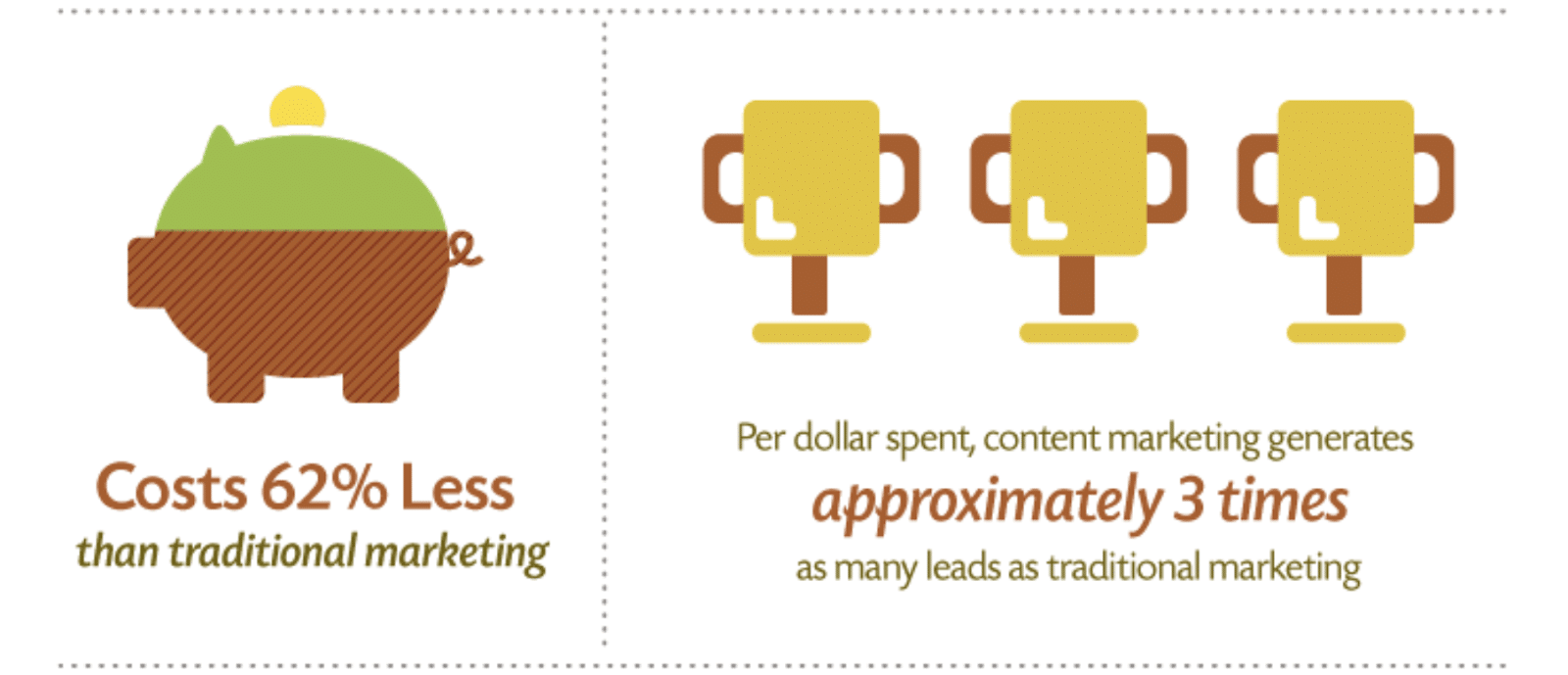
With this in mind, providing content in multiple languages on your site would seem like a prudent thing to do when it comes to your international marketing strategy and is sure to bring about a great return on investment. This is further supported by the CSA in their “Can’t Read Won’t Buy” who found that 56.2% of consumers said that the ability to obtain information in their own language is more important than price.
How to choose a WordPress translation solution?
When it comes to making your WordPress site multilingual, there are several plugin options available on the WordPress directory. However, before you make your choice, you’ll want to keep the following things in mind as each varies in terms of both price, features, and functionality:
Supported languages
While this may seem obvious, it’s essential to check the plugin you’re installing supports all the languages you want to translate your site to. Don’t just assume that because a plugin has 20+ language options, it has every language you need. It’s also important to consider what markets you may want to expand into in the future and make sure the languages of these territories are covered.
Machine vs. Human Translations
It’s also important to consider whether the plugin you choose uses machine translations, human translations, or offers both.
Machine translation
When you think of machine translation, your mind may immediately think of Google Translate. And, in a way, you’d be right, Google Translate is one of the most popular machine translation options out there. However, there are many others such as DeepL, Yandex, and Microsoft Translator. The biggest reservation when it comes to machine translation is the question of accuracy considering the fact that there is no human intervention. However, while not yet at 100%, machine translation is shown to be improving in accuracy, and the reality is that for most companies this can be a great choice.
Human translation
On the converse, when it comes to human translators, this involves hiring professional translators who have native proficiency in the target language. From an accuracy perspective, this is a great option. However, from a cost perspective, this can become expensive quite quickly, with prices ranging from 0.08$ to 0.25$ per word depending on the language. So if you’ve got a site with 200,000 words, this could quickly become a 10,000$ – 25.000$ project, and that’s only for one translated language. Another problem with this method of translation is that professional translators need to be hired each time your site is updated, which can be a lot of maintenance.
However, some WordPress plugins combine the best of both solutions and allow for both machine translation and human translation in a hybrid translation model. One example of such is the Weglot plugin that automatically detects all of your site’s content and provides a quick first layer of machine translation. It then allows users to manually edit or delete translations via an intuitive translation management interface. Furthermore, each time you update content on your site, Weglot will automatically translate it, meaning there are no maintenance issues. There’s also the option to hire professional translators with the Weglot dashboard, so this could be a good idea if you want individual pages verified by human translators to ensure there are no mistakes, e.g., check out pages. In this way, you can have the speedy and cost efficiency of machine translation combined with the accuracy of human translations.
Free vs. Premium
When choosing a translation plugin, another factor you’re going to consider is cost. You may find that there are a lot of free solutions on the WordPress directory. However, most of these solutions generally provide very basic machine translation drawing directly from Google Translate.
When it comes to going multilingual on your site, paying for a premium plugin is worth the investment, because high-quality translation will give your site a professional edge and could be the difference between web visitors making a purchase or not. An excellent place to start is to look for the highest-rated translation plugins on the WordPress directory!
Ease of use
WordPress translation plugins also vary in their degree of user-friendliness and intuitiveness. So, you’ll want not only to pick a solution with the right features but also one that is easy to use and will allow you to avail of these features entirely. A few things, in particular, you’ll want to consider are:
- Installation process: Is the plugin easy to install? Is it a no-code solution, or will you need the help of a developer to install it on your site?
- Integration capabilities: Does the plugin seamlessly integrate with your site, and is it compatible with other existing plugins on your website?
- User interface: Does the plugin have a user-friendly interface that’s easy to navigate? Can you easily manage and edit your translations?
- Support: It’s also a good idea to check out the level of support that each plugin offers. A dedicated support team will help you with any issues you may encounter in your multilingual venture.
SEO
As mentioned above, SEO is a massive consideration for any multilingual site, but unfortunately, not every translation solution is optimized for this. Make sure you pick one that is equipped for international SEO by using language-specific subdomains or subdirectories and one that indexes all your content following search engine best practices. This is key in boosting your traffic and subsequent sales and profits!
Translate and Grow!
Now more than ever, businesses need to think about innovative ways to sustain and grow their businesses. Website translation is a distinct and crucial step in this process and has proven to yield results time and time again.
At the risk of making a Darwinism, as we embark on what may very well be a changed global commercial environment, it is those businesses who are most adaptable to change that are likely to not only survive, but thrive. Fortunately, this process has never been more straightforward with the right translation solution that will put to bed any reservations you may have about taking on such a project.
Try out Weglot’s 10-day free trial to see how it can help you translate your website, expand your global reach, and increase traffic and sales!

